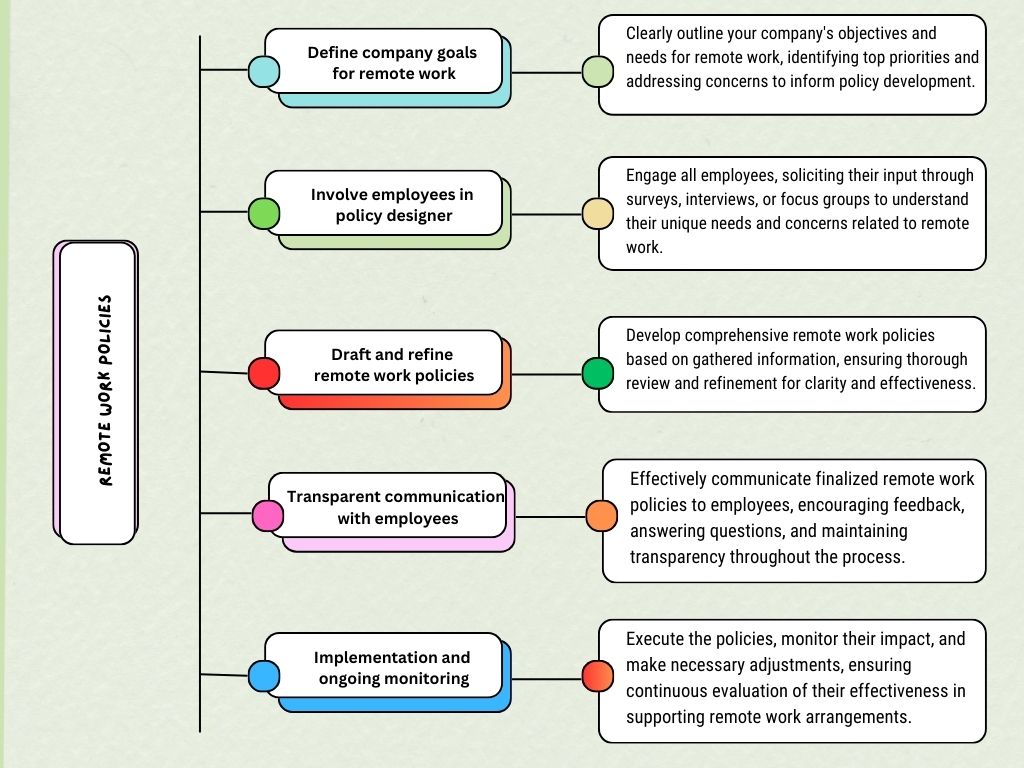Tourism and international travel have rebounded, airports are filled with travelers, and most schools have stopped Zoom classes. From all angles, it looks like life has returned to pre-pandemic settings, except for one notable outlier: remote work.
Following the success of remote work during the pandemic, there is a shift in expectation of employees towards working from home, with many suggesting it should be adopted permanently.
However, as an employer, making the decision is never easy. This is somehow understandable though, taking into consideration the fact that:
- Remote work is still in its infancy
- You may even regard it as a bubble waiting to burst
- For some, there’s no future for remote work
While you may not be entirely wrong for having these notions as a business owner, CEO, or startup founder, you can also agree that remote work has proven to be beneficial for both companies and employees so far. So what do you do?
What is required as an employer is a new shift in mindset. You can only embrace remote work, help employees adjust, and reap the benefits if you begin to see things differently by doing the following:
- Embracing the period of uncertainty
- Treating remote work as a new frontier to navigate
- Handling remote as a ‘transformative shift,’ not a ‘bubble’ waiting to burst
- Establishing remote work policies
- Investing in the right infrastructure
Table of Contents
Embracing the Period of Uncertainty
The numerous ‘return to office’ announcements made by big and small firms may paint a general picture that businesses just want to call back employees because they may lack trust in the efficiency of remote work. To some extent, some of you hold this mindset. Some employers express concerns about declining productivity while others remain unsupportive of the model altogether.
However, this is not the general picture. We can see that despite the ‘return to office’ commotion, there are many of you (employers, business owners, CEOs, and founders) who still desire to make a definitive move towards remote work.
The only issue is that you are confused where to start, what to do, or how to implement it. The truth is, you are not alone. Even big-name brands are not sure what to do.

And that is why we all see the confusion. Several firms, including Salesforce (which owns Slack), Twitter, and Comcast, to name a few, have rescinded their decisions to allow full remote work. Zoom, our popular video conferencing platform recently joined this bandwagon. Some of these firms require employees to return to office fully or spend more days (3 or 4) in the office, despite previously endorsing a 100% remote work policy.
From allowing remote work after the pandemic, to gradually authorizing more in-person work days, these decisions paint a picture of organizations navigating a landscape of uncertainty. It’s evident that many of these firms may not be entirely certain about the best approach to remote work for their employees. And it seems they are hesitant to commit to a single, definitive decision as they try to weigh in on the potential of remote and hybrid work models while still craving in-office presence.
To exit this confusion stage as an employer, you need to allow yourself and organization to explore this new model of work and how it fits into your unique situations as a team. That is, you need to face the uncertainties, and understand that as a new work model, things are bound to be chaotic. But once implemented, remote work could be a game changer for how you and your employees work. And this is the chance to experiment and make that happen. But that is not all.
Read BooK: A Practical Guide To Hiring, Managing, & Paying African Tech Talent
The “Age of Exploration” in remote work: a new frontier for employers to navigate
Circling back to the age of exploration in history, we learn how Europeans ventured across the seas in search of new routes, wealth, and knowledge. As an employer today, remote work should be the new frontier because it’s a centerpiece of the future of work.
Now is the time for you to discover opportunities for cost savings, enhancing employee well-being, and acquiring talent around the world. In order to make use of this exploration state, that is where the next points come in.
Viewing remote work as a ‘transformative shift,’ not a “bubble”
If you have been paying attention, then you’re probably aware that some see remote work as a bubble that will burst. Others just don’t think it will work. And this perception is actually not new, especially when you look at the history of new innovations.

Whether they are new technologies or trends, our tendency to view emerging innovations as ‘bubbles waiting to burst’ is evidently reflected in our perception of remote work. We’ve done this during the industrial revolution, the era of AI, and Blockchain. Yet, if history has taught us one thing, it is that many of the innovations we initially labeled as “bubbles” eventually turned into thriving industries.
In the same vein, as organizations, we need to look beyond the doubts and challenges that plague remote work in its early years, and rather embrace them. As businesses, we need to change our perspective and see remote work as a transformative shift to adopt, implement, perfect, and mold to fit our different situations.
Because the truth is, employees are not going to stop demanding for more flexibility and freedom, which they know are achievable through remote working. And as businesses that care, this is the time to start testing what works best for our various teams. It’s still early and the only way to build a world-class team is to give them the freedom and flexibility in the workplace.
Establishing and implementing clear remote work policies
When GitLab launched in 2015, it had all 9 team members working remotely. Today, the company has remote team members spread across 65+ countries. They didn’t come this far without putting in the groundwork: creating and implementing the right remote work policies.
According to GitLab, they see over 3,000 applicants per week for open vacancies and also enjoy an 85% year-over-year voluntary retention rate. These are attributable to their well-defined remote work policies, their openness in recruitment, and their emphasis on results over where one works from.

To develop and implement effective remote work policies, you need to be deliberate. Here’s a 6-step process to get it right:
- Map out your goals and needs as a company. What are your top priorities for remote workers? What are your biggest concerns? Once you have a good understanding of your needs, you can start to develop policies that address them. This is also the stage where you research best practices and examples from companies running successful remote teams. GitLab, Automattic, and Buffer are a few examples with great, documented policies.
- Get your employees involved. This isn’t something you gather a few board members to design. Everyone, especially your employees, must be part of the process. What are their needs and concerns about remote work? What policies would help them to be successful? You can gather input through surveys, interviews, or focus groups.
- Draft, review, and refine your policies. Once you have gathered all of the necessary information, you can start to draft your remote work policies. Additionally, review them meticulously and make any required adjustments.
- Communicate the policies to your employees. Once you are satisfied with your remote work policies, you need to communicate them to employees. For best results, listen to their feedback, answer questions, and be clear about everything.
- Implement and monitor progress. Once you have communicated the policies to your employees, you need to implement them and monitor their effectiveness while making the necessary adjustments.

Investing in the right technological infrastructure
Remote work cannot be successfully implemented without the necessary tools. Hardware, software, networking – there are lots of resources required. The best way to get this right is to use these 3 steps:
- Assess your current needs by identifying your team’s ongoing projects and what resources are needed for a productive work environment once you transition to remote.
- Budgeting is very important here. You need to set priorities on the most important resources your team needs. Because let’s be honest, investing the technologies for work is costly and you may be short on the amount to allocate to that.
- Sustainable growth is a key factor for any forward-thinking business. You want to invest in scalable technology solutions that can expand to accommodate your team as your business scales.
When investing in technologies for remote work, your focus should be on the following two main categories:
- Hardware – this involve the physical tools your team needs to perform well. These include laptops or desktops, headphones, webcams, printers, Wi-Fi devices, and any other tool that’s required to make their work easier.
- Remote employees love their hardware, but that is if they are installed with the right software. These include the communication tools such as video conferencing and instant messaging, collaboration and project management tools, and security software to keep malicious third-party actors away.
Conclusion
Remote work is still in its infancy. The best bet for organizations is to strategize by implementing the right policies through long term thinking. Changing the organization’s outlook towards remote work, getting the right resources, and creating long-term policies are the most effective approaches to prepare your team for success. And while doing this, organizations need to keep up with the growing trend so that they adjust and refine their policies as circumstances change.
- Guide for Global Startups to Hire Remote Talent from Africa: Talent Agency VS Bootcamps VS Global Talent Networks - August 11, 2025
- Startups Guide to Hiring Remotely in West Africa Using Remote.com - August 1, 2025
- Arbonum: Streamlining Global Contractor Management with Ease and Efficiency - July 16, 2024
